AMBS Library Green Building Design
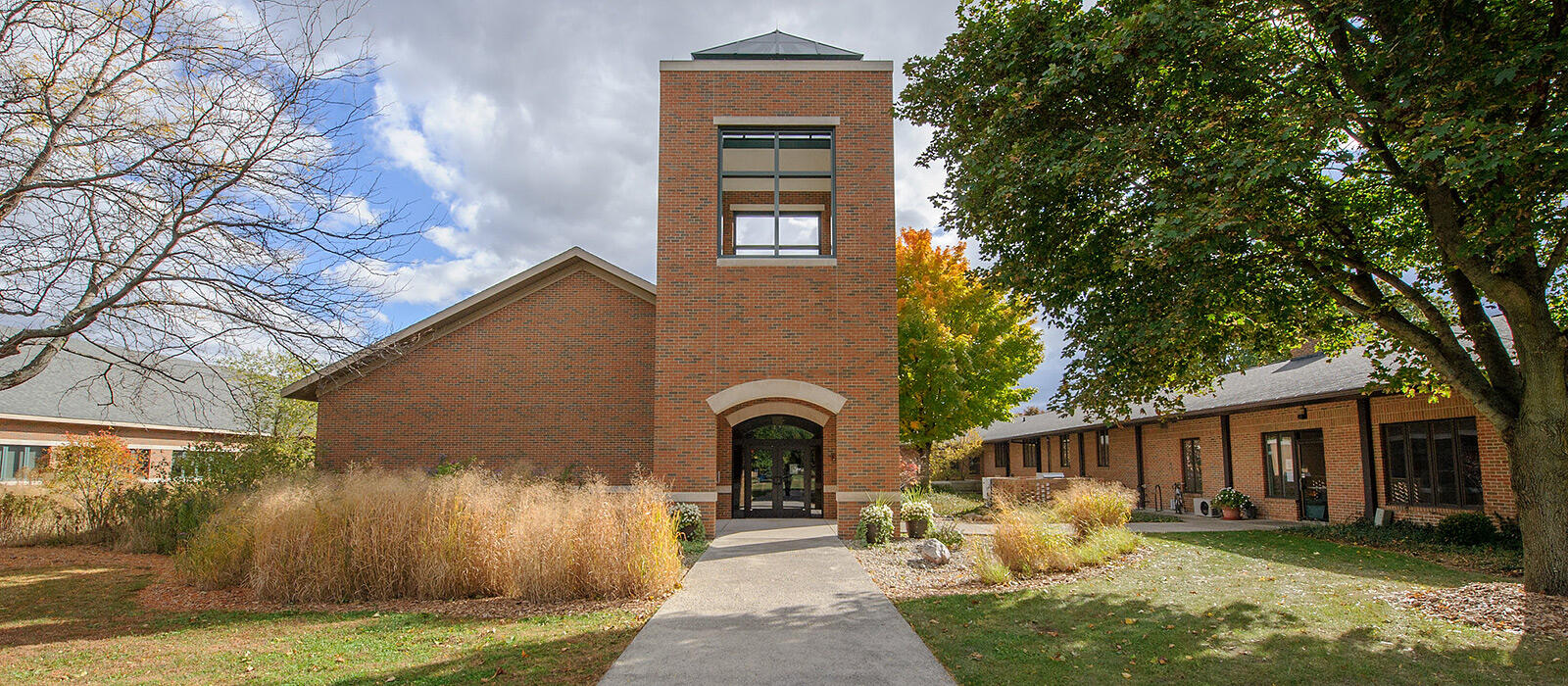
The AMBS Library was the first Leadership in Energy and Environmental Design (LEED) certified theological library in North America. The result is an incredibly beautiful and sustainable research environment for our students, faculty, and broader community.
In 2009, our building achieved LEED Gold®, the second-highest level of green building certification, for the variety of environmental features that were incorporated into the construction. The U.S. Green Building Council's LEED® green building program is the preeminent program for the design, construction, maintenance and operations of high-performance green buildings. Learn more at usgbc.org/LEED.
The library's green design is an expression of AMBS creation care values.
In addition to the specific green features, the library has large study carrels that AMBS students reserve on a semester basis, a variety of seating arrangements, and ample space for library collections. Also of special note is the cherry trim and paneling harvested from local trees and milled by our late retired Director of Maintenance, Don Steider.
Acknowledgements: Eileen Saner, retired Director of Library Services, put special care into planning and designing a facility that would match AMBS’ values of creation care and serve researchers well. President Emeritus Nelson Kraybill led the drive to raise funds from AMBS supporters so that the construction and ongoing maintenance of the facility would be fully funded. The numerous contributors to the construction and the Next Generation campaign are honored with books carved on a cherry panel in the Library Gallery.
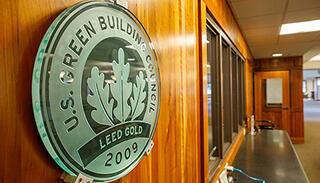
Green highlights
- an abundance of natural light, including north-facing clerestory windows that introduce indirect ceiling lighting
- geothermal heating and cooling
- extra insulation
- triple pane windows
- interior lighting systems that activate based on occupancy and lighting levels
- rain gardens to absorb runoff from the roof
- restored native prairie surrounding building
- high interior air quality including use of low-emission building products and extra HVAC filtration
- locally sourced materials
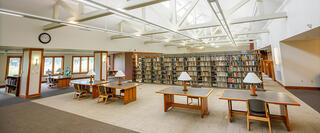
Library interior showing natural light from clerestory windows
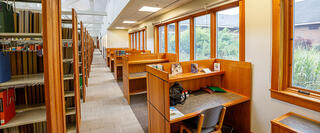
Locally milled cherry woodwork throughout the building highlights natural beauty
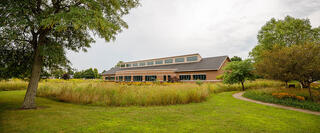
Rain gardens absorb roof runoff
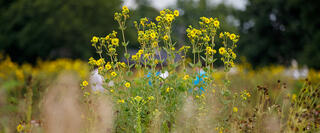
Flowers and grasses in the restored native prairie surrounding library
